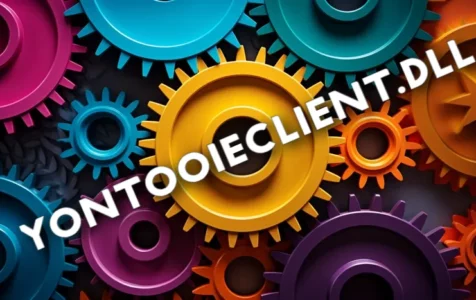YontooIEClient.dll is a Dynamic-link Library (DLL) file that is part of the software Yontoo Runtime, which is developed by Yontoo LLC or Yontoo Technology, Inc. This kind of file can be used by applications to gain functionality without having to write them from scratch. It’s like a shared codebase that different programs can utilize to perform specific operations.
In this case, YontooIEClient.dll acts as a Browser Helper Object (BHO), which means it is designed to extend the functionality of Internet Explorer. Files like these can be quite beneficial, adding features that make our web browsing more efficient. However, BHOs have the potential to be used for less savory purposes.
This particular file, YontooIEClient.dll, has been reported to be associated with displaying ads, slowing down computers, and causing various other errors. It’s known to monitor web browsers and has been characterized by anti-malware software, such as TrendMicro and Microsoft, as a potentially harmful part of Yontoo Runtime, sometimes referred to as adware. It’s often not a file that users recall installing themselves; it often finds its way onto systems as bundled software with other free applications, like Youtube Downloaders or PDF Converters.
While YontooIEClient.dll is certified by a company and can even connect to the Internet, this doesn’t automatically render it safe. Some users have reported dangerous behavior associated with this file, while others have found it non-threatening.
Expert Tip: For smoother PC performance, consider using a PC optimization tool. It handles junk files, incorrect settings, and harmful apps. Make sure it's right for your system, and always check the EULA and Privacy Policy.
Special offer. About Outbyte, uninstall instructions, EULA, Privacy Policy.
Is YontooIEClient.dll Safe? Should I Block It?
Determining whether YontooIEClient.dll is safe depends on several factors. The presence of a valid digital signature from a trusted company does add some legitimacy to the file. However, this alone isn’t always enough to guarantee safety, especially considering the detection rate by malware identification tools and user reports suggesting its potential dangers.
Various opinions exist among users about whether YontooIEClient.dll is harmful or essential. Some indicate that it is necessary for Windows or an installed application, while many others recommend its removal, citing it as dangerous.
Is It A Virus or Malware? How to Fix?
YontooIEClient.dll can be considered adware rather than a virus, due to the way it typically makes its way onto computers and its behavior once installed. Nonetheless, it can be troubling software that might interfere with your system’s performance.
If you suspect this file is negatively affecting your computer, it’s recommended to remove it. Here’s how you can address related issues:
- Check the file location: It usually resides in a subfolder within “C:\Program Files (x86)”, a typical location for many applications. However, malware can sometimes mimic file paths, so this isn’t a foolproof verification method.
- Verify the file’s digital signature: This can help determine the legitimacy of YontooIEClient.dll. If Windows identifies the Verified Signer as “Unable to verify,” this is a red flag that the file might be malicious.
- Use anti-malware software: To find and remove potential threats such as YontooIEClient.dll, use reputable anti-malware tools. These can detect and quarantine harmful files, often providing an option to remove them.
- Manual Removal: Uninstall the associated Yontoo software via Control Panel under “Programs and Features.”
- System Recovery Tools: Utilize System Restore or System File Checker (SFC) to recover from any damage caused by YontooIEClient.dll.
Community Feedback and Discussions
Community discussions indicate a general recommendation for removing YontooIEClient.dll due to its negative impact on system performance and web browsing. Despite being a legitimate DLL file from recognized companies, YontooIEClient.dll’s link to adware behaviors warrants careful handling. Removing this file and its associated software can help resolve unusual system issues. To ensure system health and security, regularly update anti-malware software and conduct system scans.
